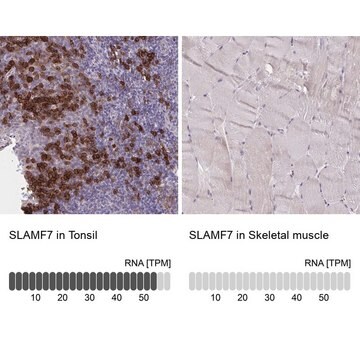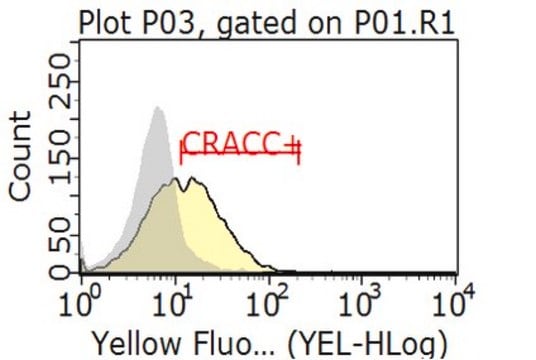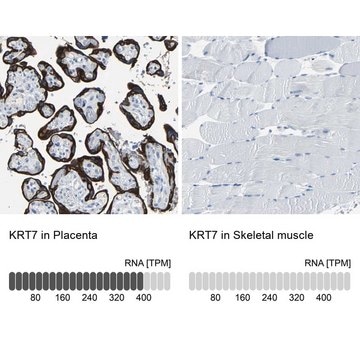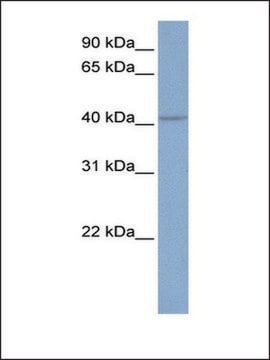MABF2093
Anti-SLAMF7 (CD319) Antibody, clone 162
clone 162, from mouse
Synonim(y):
SLAM family member 7, CD2 subset 1, CD2-like receptor-activating cytotoxic cells, CRACC, Membrane protein FOAP-12, Novel Ly9, Protein 19A, CD319
About This Item
Polecane produkty
pochodzenie biologiczne
mouse
forma przeciwciała
purified immunoglobulin
rodzaj przeciwciała
primary antibodies
klon
162, monoclonal
reaktywność gatunkowa
human
opakowanie
antibody small pack of 25 μg
metody
flow cytometry: suitable
immunohistochemistry: suitable (paraffin)
immunoprecipitation (IP): suitable
inhibition assay: suitable
izotyp
IgG2bκ
numer dostępu NCBI
numer dostępu UniProt
docelowa modyfikacja potranslacyjna
unmodified
informacje o genach
human ... SLAMF7(57823)
Opis ogólny
Specyficzność
Immunogen
Zastosowanie
Flow Cytometry Analysis: A representative lot detected SLAMF7 (CD319) in Flow Cytometry applications (Bouchon, A., et. al. (2001). J Immunol. 167(10):5517-21).
Affects Function Analysis: A representative lot stimulated SLAMF7, which resulted in an increase SHIP-1 tyrosine phosphorylation in OPM2 and MM1S cells expressing EGFR-CD45. (Guo, H., et. al. (2015). Mol Cell Biol. 35(1):41-51).
Inhibition Analysis: A representative lot blocked the augmented capacity of human blood-derived macrophages to engulf Raji cells in response to anti-CD47 antibodies. (Chen, J., et. al. (2017). Nature. 544(7651):493-497).
Immunoprecipitation Analysis: A representative lot immunoprecipitated SLAMF7 (CD319) in Immunopreciptation applications (Bouchon, A., et. al. (2001). J Immunol. 167(10):5517-21; Tassi, I., et. al. (2005). J Immunol. 175(12):7996-8002).
Inflammation & Immunology
Jakość
Immunohistochemistry (Paraffin) Analysis: A 1:50 dilution of this antibody detected SLAMF7 (CD319) in human tonsil tissue sections.
Opis wartości docelowych
Postać fizyczna
Przechowywanie i stabilność
Inne uwagi
Oświadczenie o zrzeczeniu się odpowiedzialności
Nie możesz znaleźć właściwego produktu?
Wypróbuj nasz Narzędzie selektora produktów.
Certyfikaty analizy (CoA)
Poszukaj Certyfikaty analizy (CoA), wpisując numer partii/serii produktów. Numery serii i partii można znaleźć na etykiecie produktu po słowach „seria” lub „partia”.
Masz już ten produkt?
Dokumenty związane z niedawno zakupionymi produktami zostały zamieszczone w Bibliotece dokumentów.
Nasz zespół naukowców ma doświadczenie we wszystkich obszarach badań, w tym w naukach przyrodniczych, materiałoznawstwie, syntezie chemicznej, chromatografii, analityce i wielu innych dziedzinach.
Skontaktuj się z zespołem ds. pomocy technicznej








